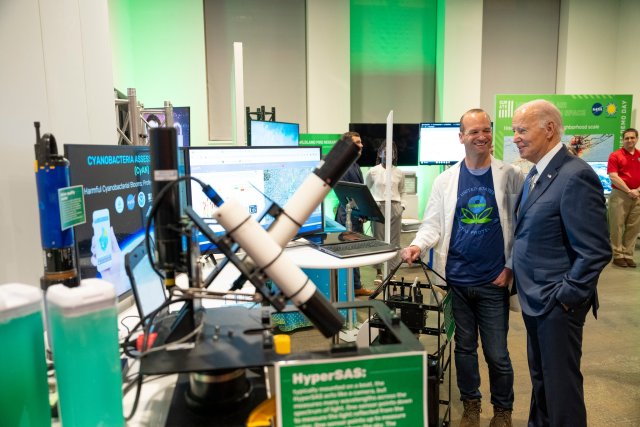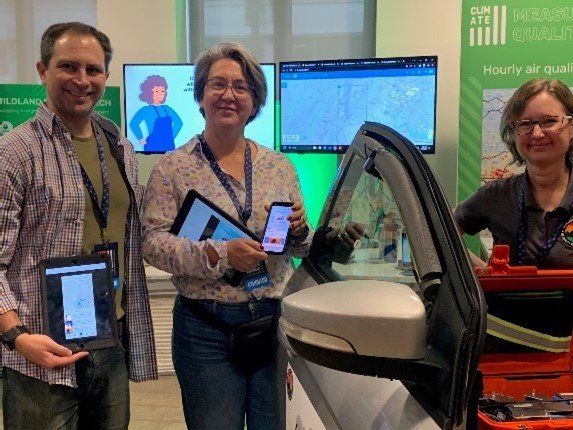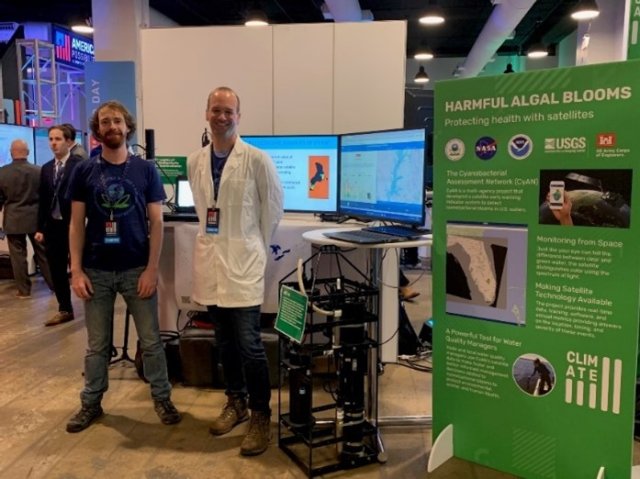American Possibilities: A White House Demo Day

Published November 28, 2023
Innovations in science and technology help improve our lives and shape our future as a nation. To showcase what federal research and development can accomplish, the White House Office of Science and Technology Policy hosted American Possibilities: A White House Demo Day. EPA scientists delivered two of the 45 invited scientific demonstrations in Washington, D.C.
The event showcased inspirational and cutting-edge federal research and tools, from improved rocket technology to sustainable clothing. The audience included members of the media and over 600 White House, Congressional, federal agency staff, and President Biden.
“We were excited that our scientists had a chance to talk to the President and others about research that helps people across the country better protect their health through timely information,” said Chris Frey, EPA Assistant Administrator for the Office of Research and Development.
EPA showcased research on Wildland Fires Research to Protect Health and the Environment and Harmful Cyanobacterial Blooms: Protecting Health with Satellites.

The Wildland Fires demonstration was presented by EPA researchers Amara Holder, Ana Rappold, and Steven Prince, and highlighted several research projects that are helping protect communities from wildfire smoke.
- Wildfire Smoke Air Monitoring Response Technology (WSMART) Pilot: The WSMART pilot loans air monitoring technologies to state, local and tribal air organizations to support supplemental air monitoring in areas affected by wildfire smoke that have observational data coverage gaps.
- Research on Do-It-Yourself (DIY) Air Cleaners to reduce wildfire smoke indoors: The DIY Air Cleaner research focuses on evaluating DIY air cleaners for effectiveness and safety. The air cleaners are made by attaching an air filter to a box fan with tape, brackets/clamps, or a bungee cord.
- EPA’s Smoke Sense Study and Mobile App: Smoke Sense is a crowdsourcing, participatory science research project and app that increases public awareness and engagement related to wildfire smoke health risks.
“The people I spoke with were interested in a wide variety of topics related to wildfires- and not always related to our research- which kept me on my toes. I was able to highlight our wildfire research to President Biden, which was well-timed as we had active wildfires in North Carolina, West Virginia, and Virginia,” said EPA scientist Amara Holder.

The Harmful Cyanobacterial Blooms demonstration, presented by EPA’s Blake Schaeffer and Wilson Salls, featured research to help communities respond to harmful algal blooms, including EPA's Cyanobacteria Assessment Network Application (CyAN app). The CyAN app is available in two versions: the CyANWeb app and the CyAN Android mobile app. Both are easy-to-use and customizable apps that provide access to cyanobacterial bloom satellite data for over 2,000 of the largest U.S. lakes and reservoirs. EPA researchers developed the apps to help local and state water quality managers make faster and better-informed management decisions related to cyanobacterial blooms. The CyAN apps are a product of the collaborative, multi-agency Cyanobacteria Assessment Network, which includes National Aeronautics and Space Administration (NASA); National Oceanic and Atmospheric Administration (NOAA); United States Geological Survey (USGS); and, as of 2023, U.S. Army Corps of Engineers (USACE).
The EPA scientists that attended made valuable connections and shared their research with key interested parties.
This article was written by EPA's Melissa Payne.
